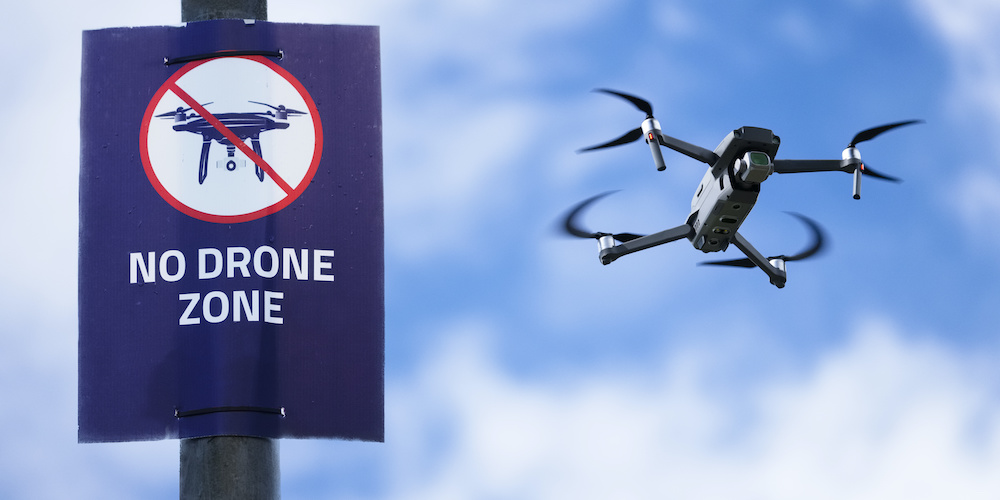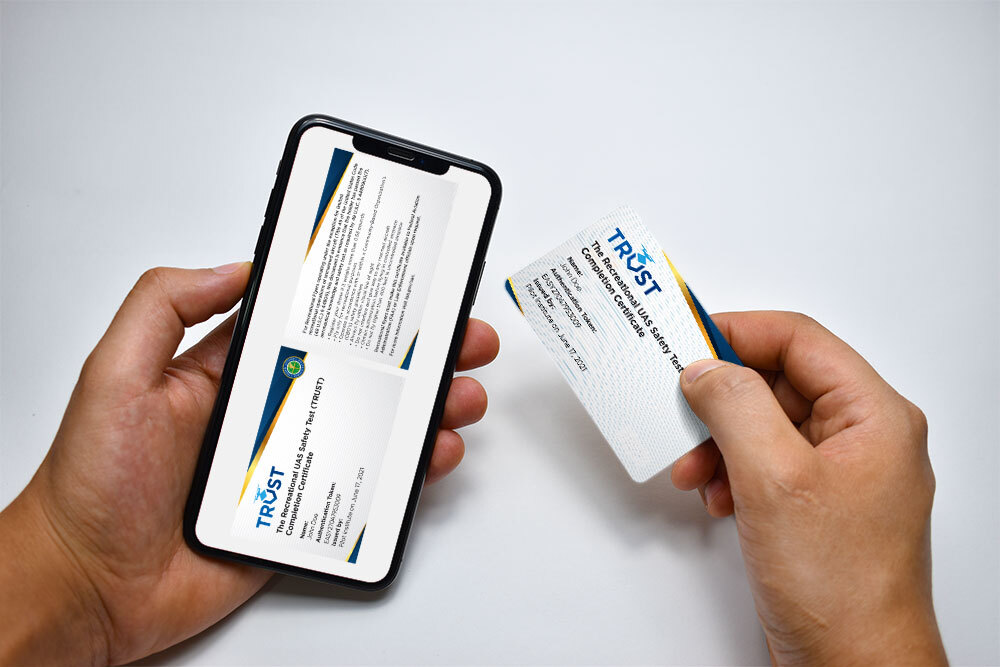As of March 16, 2024, the discretionary enforcement period of Remote ID is officially over. This means that all drones required to comply with Remote ID must start following the rules. Otherwise, pilots can face fines, suspensions, or other penalties.
We have covered Remote ID extensively over the years, but now is the perfect time to brush up on the essentials. This article covers everything you need to know to ensure that you are not in violation of the Remote ID rules.
Key Takeaways
- Full implementation of the Remote ID rules officially started on March 16, 2024.
- All drones that must be registered with the FAA must now be compliant with Remote ID rules.
- UAS operators violating the rules may be penalized with fines or suspensions.
- Flying within FRIAs is another option, although the scope of such areas is limited.
What Is Remote ID?

Simply put, Remote ID is a digital license plate for your drone. It allows the FAA, law enforcement, and, in some cases, the general public to identify your drone.
If you want to learn more, 14 CFR Part 89 is the legislation for you. The document has everything you need to know, but it is a dense read. We’ll break it down for you here to make things easier to understand.
Who Must Comply with Remote ID?
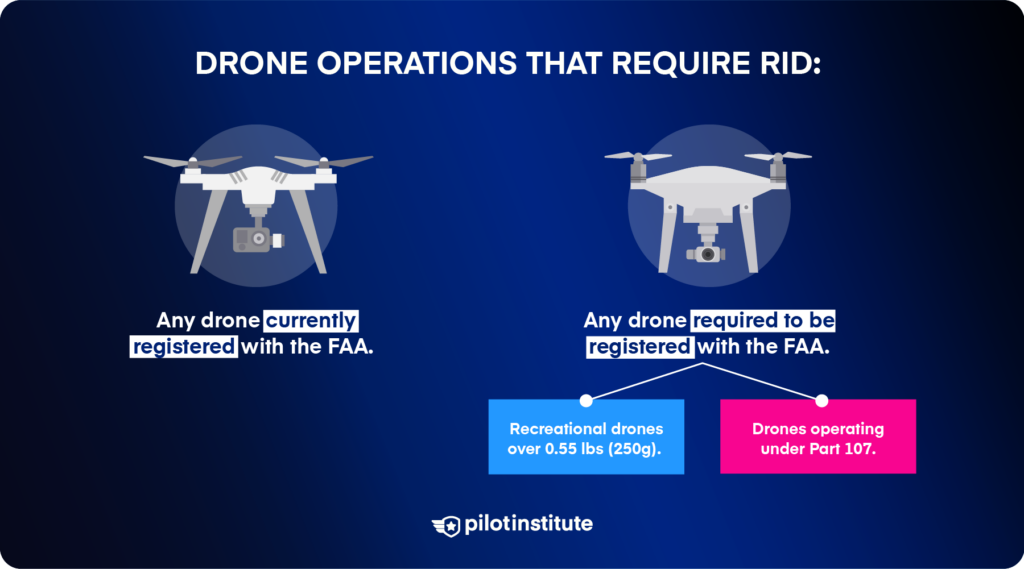
Here’s the basic rule: If the FAA requires you to register your drone, you must comply with the Remote ID mandate.
This rule covers all aircraft weighing under 55 lbs. operated under Part 107, as well as all aircraft over 250 grams and under 55 lbs. operated under recreational rules.
Recreational pilots who fly drones of 250 grams or less are not required to comply with Remote ID. However, take note that the weight limit refers to the takeoff weight. Most sub-250-gram drones are close to that limit in their most basic configuration. Adding accessories like lights or propeller guards might take them over the limit.
What happens when your drone goes a smidge over 250 grams? You must register it with the FAA, meaning it must fly under Remote ID rules.
Drones operated for public safety are also required to fly with Remote ID. The same goes for drones operated by state and tribal agencies. Drones flown by federal agencies are exempt from Remote ID.
What Information Is Broadcast by Remote ID?
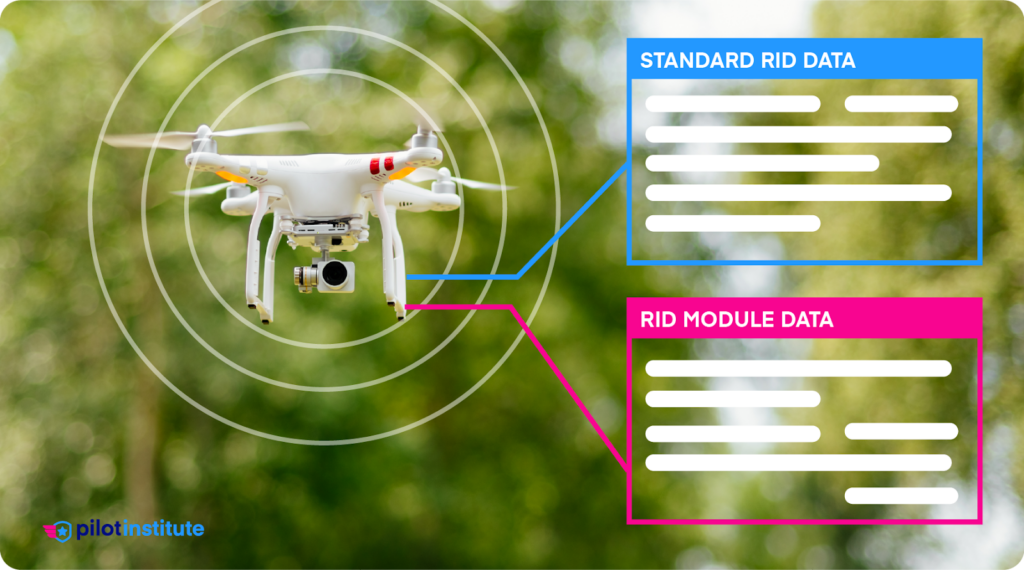
Remote ID can broadcast two different types of messages. Which type your drone transmits depends on its Remote ID equipment.
Drones with built-in Remote ID use Standard Remote ID. If your drone doesn’t have this functionality, you must use a separate Remote ID Module. You’ll need to purchase one of these third-party devices and attach it to your drone.
Each Remote ID module has a serial number linked to your drone registration. We have a video that explains this process in detail.
The table below is a quick summary of the broadcast information based on the two types of Remote ID:
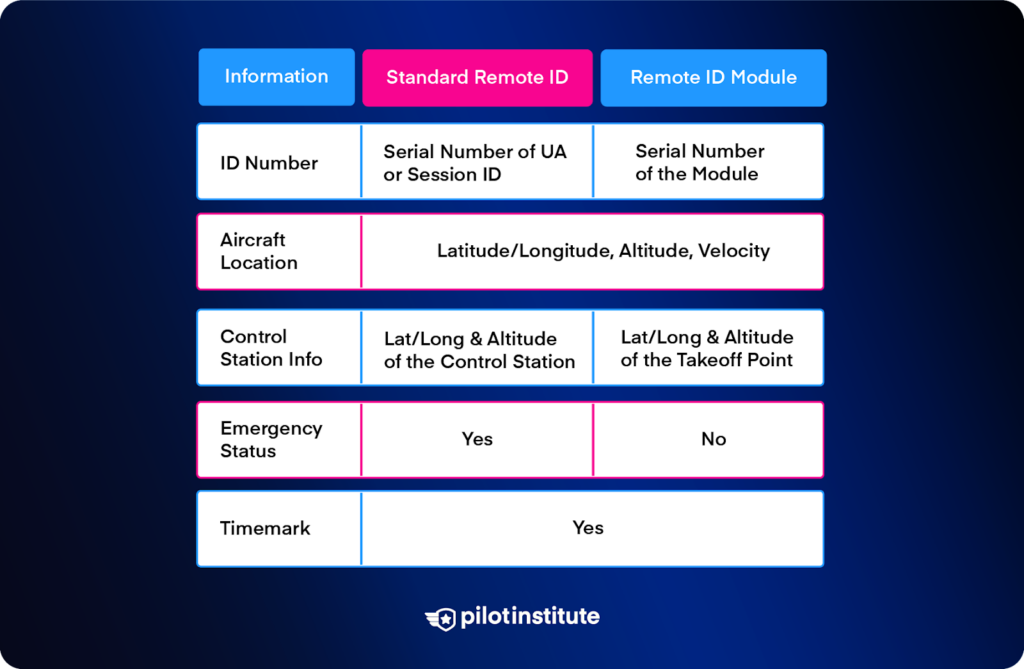
From the comparison, the difference between the two sets of information is minimal. Since the Remote ID Modules are not part of the drone, they cannot relay as much info as the integrated units.
Flying in FRIAs
There is a third, lesser-known method of compliance: flying in an FAA-recognized identification area (FRIA). If you’re flying exclusively within a FRIA, you do not need to comply with Remote ID requirements. This is true even if you would have to do so under normal circumstances.
FRIAs are basically Remote ID-free zones run by Community-Based Organizations (CBOs). The FAA has currently recognized four CBOs:
- Academy of Model Aeronautics (AMA)
- FPV Freedom Coalition
- Flite Test Community Association (FTCA)
- STEM+C
If you are looking for a FRIA near you, FRIAMap.com is an excellent resource. It shows the locations of FRIAs and which CBO runs them.
There are a growing number of FRIAs now. However, flying only within FRIAs greatly limits the scope of where you can fly your drones. If you want to maximize the use of your drone, then you’ll need to comply with the Remote ID mandate.
Checking If Your Equipment Is Remote ID-Compliant
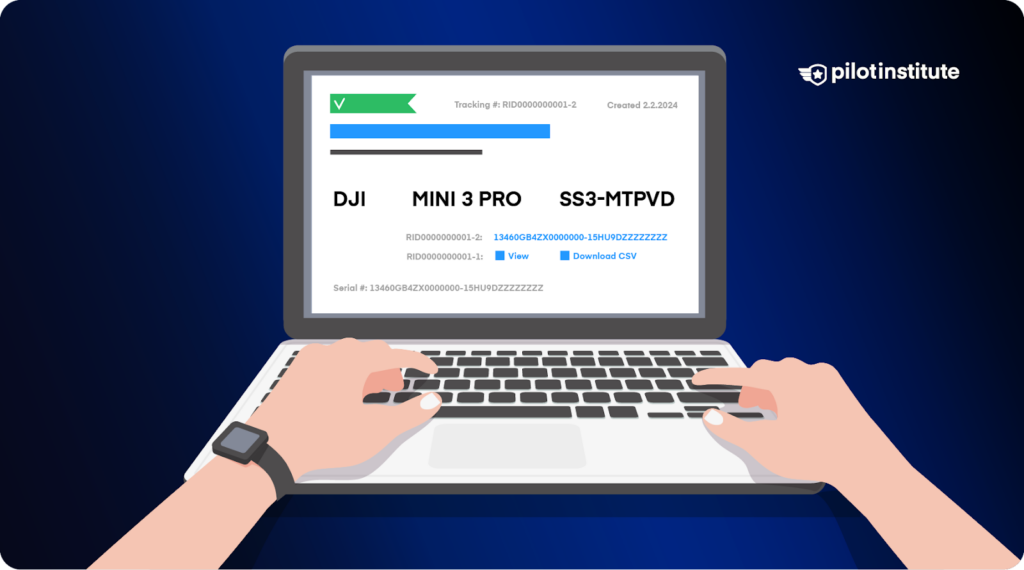
If you intend to fly under Remote ID rules, you must ensure your equipment meets the requirements. First, check whether the drone or Remote ID Module you are flying with is Remote ID-compliant.
The FAA has a very handy tool for this: the UAS Declaration of Compliance System. Look for the Declarations of Compliance (DOC) list, and search for your drone model or Remote ID Module. Make sure that you filter the list by RID, not OOP. If you select OOP, the list will only show devices approved for Operations Over People.
This is a growing resource, and we expect the list of compliant devices to grow longer in the coming months. If you purchased your drone or RID Module after 2023, it will likely be on the DOC list.
Conclusion
The FAA delayed implementing the Remote ID regulation to give UAS pilots time to comply. However, as of March 16, 2024, the rule is in full effect.
Unless you only fly in FRIAs, you will need to follow the Remote ID rules. Failure to comply with the mandate may result in fines from the FAA if you get caught.
Remote ID might remain a controversial topic, but the requirement won’t be going away.Do you fly a home-built UAV? Learn more about Remote ID requirements for these drones in this article.


